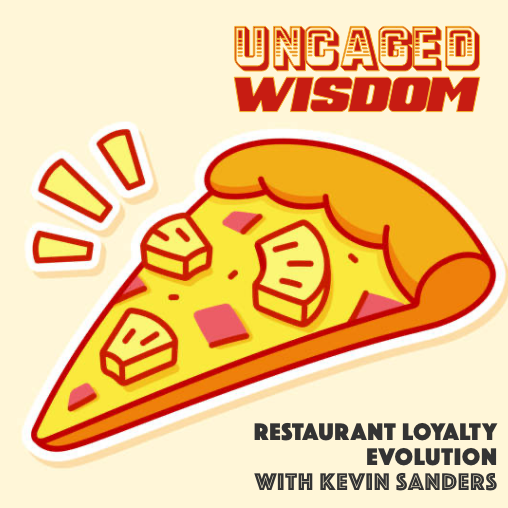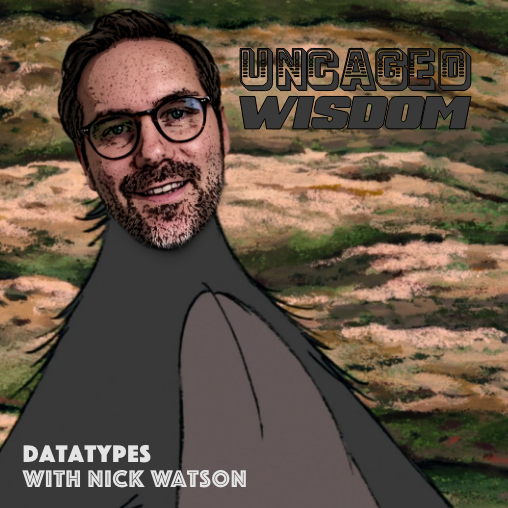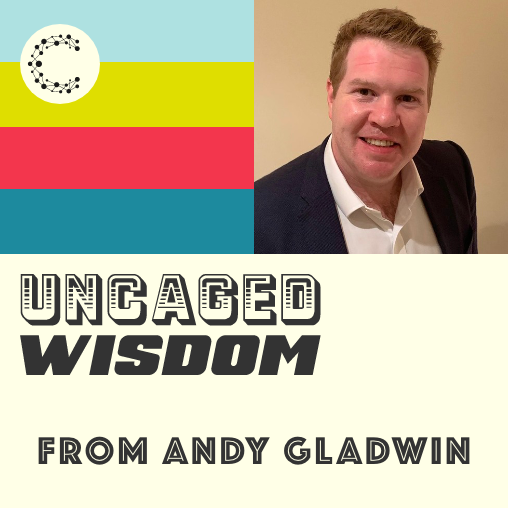Marketing and Retention Within Subscription-Based Retail w/ Matthew Seifert
- 0.5
- 1
- 1.25
- 1.5
- 1.75
- 2
Matthew Siefert: Juggling, I can still do. I used to be able to juggle with multiple people. That I would love to be able to do again with like clubs and things like that and ring.
Kayla Siegmeier: Wait. Did you juggle multiple people or you juggled the-
Matthew Siefert: I juggled peo... Please. I hope that... That would be amazing.
Speaker 4: Uncaged Wisdom. Cheetah Digitals podcast for modern marketing.
Julian Bracey-Davis: Hello again and welcome back to another episode of Uncaged Wisdom, the podcast for modern marketers. I'm Julian Bracey- Davis.
Kayla Siegmeier: And I'm Kayla Siegmeier.
Julian Bracey-Davis: On this special episode of Uncaged Wisdom, we're like the cat that got the cream and is now thinking about the best place to do his business. You could say we're looking for the pick of the litter. Carrying on with my feline idioms, the cat has certainly not go the tongue of today's guest. Here to talk to us about some of the unique characteristics of being a digital marketer for a subscription- based retailer, please welcome Matthew Siefert, senior director retention and monetization at PrettyLitter.
Matthew Siefert: Thank you. Thank you for having me.
Kayla Siegmeier: So Matt, we like to do a little icebreaker. If you could audition in for a talent show, which talent would you be? I guess not, would you be, would you audition with?
Matthew Siefert: Oh. So I grew up in a circus, so I can juggle, ride a unicycle. I can kind of do a lot of circus tricks. So yeah, that's probably what I would do.
Kayla Siegmeier: How did I not know this about you?
Julian Bracey-Davis: As in, you actually were performing a little bit in the circus?
Matthew Siefert: We were performing. It was more of a local establishment. We weren't talking the large ones. It was just the local establishment. And we would go around, friends, entertain for community centers, schools, things like that. So yeah, I've learned how to juggle, ride unicycles, sing, all that stuff.
Julian Bracey-Davis: Out of all the skills you learned growing up, what's the one that even if you can't do it today, what was the one that you enjoyed doing?
Matthew Siefert: Juggling I can still do. I used to be able to juggle with multiple people. That I would love to be able to do again with like clubs and things like that and rings. But yeah, maybe I can get back into it now.
Kayla Siegmeier: Wait. Did you juggle multiple people or you juggled-
Matthew Siefert: I juggled... Please. I hope that... That would be amazing. No, I would juggle like clubs and rings with the person across from me and things like that.
Kayla Siegmeier: That makes way more sense.
Matthew Siefert: Please. I would love people to think that I could juggle people.
Julian Bracey-Davis: We're going to run with that. I control the edit. So Matthew Siefert, the people juggler. To kick us off, could you tell us, I guess a little bit about your journey post- circus into your current career and some of the highlights along the way, because you've got some brilliant experience with people like Evite and Xperia and obviously where you ended up with PrettyLitter today in your current role.
Matthew Siefert: Yeah, absolutely. So I actually spent the first half of my digital marketing career on the ESP side. So email service provider, obviously, where I spent couple of years at Cheetah, which is where I met a lot of amazing people early in my career. And then I switched over. I did a little work on the agency side, and then I was introduced to Evite where I spent about five years running acquisition and also retention marketing. So both sides of the coin from the marketing perspective. And then after that, I was brought over to PrettyLitter, where, as you mentioned, I head up retention and monetization. So I'm fully responsible for the customer and the actual growth of the customer itself. So yeah, it's been a great ride.
Julian Bracey-Davis: Working for Evite to PrettyLitter. Very different products, different offerings. What caught your attention?
Matthew Siefert: As many of us, I'm an animal lover at heart. It was such an interesting, fascinating product to me. I mean, Evite, it was a wonderful brand. I had a great time at Evite. I was just really excited to work on a traditional, tangible product and especially being D- to- C and subscription, that's something that was really, really interesting to me. But the product itself was fascinating. I thought it was just doing some wonderful things for pet parents out there and I really wanted to be a part of it.
Julian Bracey-Davis: Really, again, to help guide out the rest of our conversation, could you tell us a little bit about some of the challenges or the unique nature of the subscription model and keeping people with you when it comes to a very specific product such as cat litter?
Matthew Siefert: Overall, just from a subscription perspective, obviously we want people to stay with us as long as possible. I know we want them to be a part of the PrettyLitter family forever. So when we do have new customers coming in, it's really important for us to obviously retain them and make sure that they're getting the product they're expecting, getting the service level that they're expecting and that they just love being with us from a product perspective. Overall, I mean, we're always focused on retention on our side because as you know, the first month is really the biggest hurdle for any subscription company is that a lot of people are looking to try out our product, so they may see us on Instagram or Facebook or a TV commercial or something and say," Oh, that looks really interesting." So again, this is not just for PrettyLitter for in general subscription products. People just really want to try it out and see what it's all about. So my responsibility is really to, once we get them in from top of the funnel, I want to make sure that the customers have the best experience possible, we're setting and exceeding their expectations, so they do stay past that first month. And that obviously brings on challenges within itself, in terms of the expectation, communication. Our product is a health monitoring cat litter, for those who aren't familiar with it, that we deliver obviously door- to- door, to your door. And what's really important is there's an education piece behind it. So while we're standard subscription, we want them to stay month after month, after month. I have to make sure that the education is there upfront. That they understand what they need to be doing with the litter, the depth of the litter, when they need to change it. Like, what do the colors mean? Things like that are really, really important as we're building this relationship. So again, all subscriptions have this challenge. I think we have a unique set because we have to, there's an education piece of it upfront.
Julian Bracey-Davis: They've gone from seeing an ad to actually filling out the form, to get that first month, whatever it is and then it's showtime for you, to make sure that that person, once they've got their first order in long- term, they will remain with you.
Matthew Siefert: Yeah, absolutely. So, yeah. My role is once they come through and convert, my goal is to keep them as long as possible. So we're very heavily focused on LTV. So the lifetime value of a customer. We want to make sure that they're not only happy, but they're also staying with us and they're engaged and they're getting what they're looking for. The product's performing the way it's supposed to be performing.
Kayla Siegmeier: With 2020, we have a ton of people are at home. Everyone is expecting everything delivered these days, so there's a lot more time to be considering their cat's health and also they're just looking for convenience. Is there anything that 2020 has done to impact your business significantly or shown interesting customer habits that you've noticed?
Matthew Siefert: I mean, to be honest, you hit the nail on the head. I mean, that's really what we were seeing, is really around convenience, delivery. Something that pet parents didn't have to worry about. They knew that they were going to get their litter, that helps monitor their cat's health and delivered to their door each month, so they were able to have some sort of peace of mind that each month they don't really have to worry about it. It's lightweight, it comes to their door, they don't have to think about it. So that was actually really important. So the convenience factor and the delivery factor we saw on that was really obviously a positive impact from a business perspective for us.
Kayla Siegmeier: So how are you guys looking at the member list and your churn rates? How are you doing the analysis there?
Matthew Siefert: So we focus heavily on... We have, as I mentioned, we look at LTV, so lifetime value of a customer. So that's one of our main focuses. So when the customer comes through, we know that heavy churn point for many subscriptions is really around month one. And then after that, from month two on, the turn rate obviously starts to drop because you have the people in month one who may have been trying it out. It was their first time. They may have recommended by a friend, so they just wanted to see what the product was about and how it worked. I focus heavily on the first 30 days. So while I do look long- term, my immediate need, when I started building out the program from a customer life cycle perspective, I made sure that I focused heavily on the critical first 30 days for our customers, to make sure we put them in the right position to be able to continue their subscription.
Julian Bracey-Davis: The first 30 days as a PrettyLitter customer, what does that look like? What would you share with us for your thinking around those 30 days?
Matthew Siefert: So what we did in the past year, so we focused heavily on looking at reasons for churn. So why are people actually leaving? What are our top reasons that people are giving us? So maybe trying it out and then they decided to just like," Oh, it wasn't working for me." So as I continued to dig deeper, I realized that there's more to just that surface statement of,"Oh, it's just not working." It comes down to the education around it. So what I built was from an email and an SMS perspective, is I built two flows that basically went out to these customers from the minute that they converted through the first 30 days. So I looked at our traditional onboarding through email. So you've got your order confirmation and then right around the time that you received your product, or the first time that you received your litter, there was an education piece that lets you know the top tips, like the depth needs to be two inches. Keep it in a low humidity area. Make sure that you stir it because it's a non clumping litter. Things like that that may not be traditionally second nature to our customers because they're used to clay clumping litter. From a SMS, which we'll probably talk about in a little bit, is that SMS was a really powerful channel for us, which we introduced within the past year also, that we were able to start doing more of a true onboarding strategy through that. So you had your order confirmation and then you have the ability to, in more real time, we were able to sync up with our shipping company. So I knew when it was delivered, I can trigger an SMS to make sure that you have all the tools that you need because I know that it's at your door right now, so you're ready to set it up. Here are some keywords that you can text us and we can get you the color chart, give you your top five questions. We're able to get you a rep if you have things. So I just worked on building these, they're more or less building blocks to a successful use of the product for the first time.
Julian Bracey-Davis: Yeah. So it's going back to that, the word you used of education through this journey, you've taken them, I guess the opening gambit would be," Welcome to the program. Here's what to expect." The first week or two is actually just reinforcing how the product should be successfully used, so that they feel comfortable with it because yeah, I'm sure that's often what people can be put off with quickly, is that they feel like they don't understand something or it's not working. And then towards the end of the month, it's making sure that I guess they've got the right amount or they can get ahead of that. Is that a fair summary of those for eight days in terms of like content piece?
Matthew Siefert: Yeah, absolutely. So yeah, the last one that you mentioned was actually pretty important for us, is that we introduced through text, so SMS and also through our email program, that you could actually ship early. So you're able to ship it early through either keywords, if you are part of our SMS program, or you could just click through the email and actually pull up your order earlier. So we obviously want to make sure that you always have the freshest layer possible. And also we have allowed you to, again, through keywords and through email, to be able to update your frequencies. So right now it is every month that you could get your litter but if you choose that, you're like, I actually would like to be changing it every three, three and a half weeks, we could change that for you. So now we can put you on a different cadence. So again, as we're learning about the customers and their behavior, we are leveraging this data and really understanding that, okay, they're not one size fits all, in terms of the size of the cat, the litter box, things like that and behavior. So we want to make sure that we are giving our customers all of the tools possible within those first 30 days, to cater the product and the cadence and the shipment to their lifestyle and their cat's lifestyle.
Julian Bracey-Davis: Those education points in those first 30 days, they are sort of moments you've identified as key points of, we should do this then.
Matthew Siefert: Correct. Yeah. Data's our best friend, as all marketers. So we make very data- driven decisions in everything that we do. So as I was researching prior to launching the entire program, I was looking through again, the first 30 days, reasons why people join us, reasons why people churn, why their customer support also rolls up into my world, so why are people calling us or chatting with us or sending us something through SMS? What are they talking about? So I identified six, basically impact points of where I could help the customers either answer the questions or anticipate what they're going to say. So based on all the learnings that we had, I looked at okay, after immediately at purchase. So once you make that purchase, you're now become post- purchase. We have a confirmation page. Let's educate the customer on the confirmation page. Say," This is what you're going to expect," and literally lay it out for them to understand what the messages are going to be, what they need to do to prepare for the litter. And then moving into leveraging our order confirmations, our shipping confirmations, our delivery confirmations for those education and impact points that we realized that it is great to be notified that," Hey, your shipment's on its way. Here's your URL to be able to track it." What's more impactful is adding that and then saying," Hey, text status at any time to track your ship it, anytime you need to." Or if you want to know when it's delivered, we now say," Text colors to get our handy color chart that you can keep on your phone," which is actually one of our top keywords that's texted to us because people want that because they need to understand what the colors mean within the litter.
Julian Bracey-Davis: Did you, because as you said, date is at the heart of everything and all three of us on this call, we love it when we find out something that, oh actually surprises you. But is there anything that you learned and you could share, that surprised you about those first 30 days?
Matthew Siefert: I would say two things. So the first, yes. The first that you mentioned actually was really impactful from our viewpoint, was being able to allow the customer to have control of when they can ship. So do you want to ship early? Do you want to push your shipment? Just giving them a little more control helps in the subscription world, because we want to obviously make sure that it is really helpful and it's on their schedule. The other piece was around what I learned from the data perspective, is I always say that the reason people join isn't the reason that they cancel. So someone who joins because they're trying, they might come back and they might decide to cancel. And they're just like,"Yeah, I was just trying it out." But I'm like," That's the reason you join. That's actually not the reason you canceled." The reason you canceled, and as we dug deeper, we realized, oh, that's where a lot of the education came from. We said," Oh, you're canceling because you don't have enough depth or you need to stir more frequently or it's in a high humidity area and we could easily help that by educating and giving you the tools that you need to be successful." So that was actually a huge light bulb moment for us, that we realized were like, oh, this is great. So obviously people will try it and I've done it as a consumer too and I realized that was the behavior I had, is that I would say I was just trying it out. And I'm like," That's not really the real reason I'm canceling. The reason that I'm canceling is because of X, Y, Z."
Kayla Siegmeier: So you've talked a lot about those different moments that you've identified in the customer life cycle specifically in that first month. And you've also been mentioning a lot about email and SMS. How important has it been? And also, how are you identifying moments where you should be using email versus SMS versus other channels where you're talking to your consumers?
Matthew Siefert: So when I launched both the programs, so we launched email obviously years ago, but we launched SMS back in 2019. So SMS has been really impactful for us when it comes to keywords and edit changing shipment or being able to get to a rep as soon as possible. Email obviously has been extremely helpful for us too, with order confirmations and just ongoing communications. Things that we can't express simply through text. So when we launched the SMS program, we actually launched them in parallel to emails. So people were actually getting both at the same time because we wanted to see what the impact for SMS was. So we realized that as time is going on, when the customers are really starting to adopt SMS within our program. So we started going a little more heavy on more of the real time, so their delivery confirmations actually really through SMS, they're shipping earlys through SMS, things like that. We realized anything we can use keywords and they can make really split- second decisions, it was hugely impactful for us. And SMS overall, was new to us. We just, from a company perspective, it was very new to us. For me personally, as a marketer, it was one of the only channels I've never worked in. So we dipped our toe very cautiously when we actually started with it because every company is different, every organization's different, every product is different. So they work for many and they work for not... It depends on how it's used. So when we actually launched SMS, we actually launched the customer support world first. So we wanted to see, are the customers going to engage with this? Are they going to contact us? Are they going to actually even like this channel? And we tested it for about three or four months, and as time went on, we realized that it was actually starting to surpass our other standard channels and even some of our large channels, like chat. Because people love the convenience of being able to just talk with us through SMS. So then we started to slowly roll out SMS through the communication strategy. So through the first 30 days, and I slowly like just almost dripped it out over six to nine months, until we got to the point that we are right now, with the current 30 day life cycle that we have.
Kayla Siegmeier: What degree do personalization tactics play a part in all of this? How are you understanding the owner, their pet, and understanding that common data layer amongst them?
Matthew Siefert: That is more of a 2021 focus. We did do some of it in 2020. A lot of it was really just getting the communication set up. Although we we do collect cat name, breed and adoption date or birth date at checkout. Right now, it's optional. We're looking to expand on that. We do currently, through email, use cat names. So we address the customer by the cat's name, so as opposed to the actual pet parent, which is always fun. You can have a lot of fun with that in terms of just being really, really cute with just headlines and subject lines and things like that. The other personalization we use is really just around the product and what they're ordering. So a lot of the SMS that we're doing and the email we're doing is really just catered to the products that they have. So it just really around targeting. But our focus for 2021 is really building out that cat profile, if you will, so when they come through, they are giving us more information about the cat, maybe their litter box. So we can understand where the litter box is, the size of the litter box, do they have additional cats? Even if they're buying maybe just one bag to try out, I would love to allow our customers to be able to give additional cat information if they have more than one cat because right now it's set up that you can only identify one cat. So this would be a great opportunity to be able to understand the whole family. And obviously that gives us a wealth of information from a first party data perspective that we can now help them get into the right amount of bags, the right amount of time, so we again can help them make those smart decisions, as they go on their journey with PrettyLitter.
Julian Bracey-Davis: On that, actually... So this is just my classic everything. Anytime I hear a bit of preference data, or learning more about a user, I'll chuck in cheater experiences, just for the hell of it. This isn't a cheater plug right now. We'll do that in a minute. But on that subject of trying to understand broader preferences of your user, great point you've already made about cat, cat name, breed as optional pieces on checkout. Have you started thinking about, and this could be beyond the 30 days, how you would start getting that data ready? How do you start gathering that information and actually keep updated as well because everyone's changing. People get more cats.
Matthew Siefert: Yeah, no, absolutely. Absolutely. Yeah. I mean pounds are expanding, things like that. So yeah, that's actually a great question. We've looked at, we'll most likely turn it into... We have a portal. So we do have a customer portal on our site. So we're going to leverage that. We're actually working on revamping that. We're going to allow more cat information being provided there. So emails obviously going to be a really heavily used channel, to be able to get people back to provide additional information. If actually, they started with one cat and now six months later, they adopted or rescued a second cat, we would love to know that information. We would love for them to provide it so we can send them obviously birthday or anniversary or adoption bursary types of emails and communications. And again, making sure that they're in the right volume of bags from us. So we would definitely use that. From performs, we've talked about using it through SMS. Like maybe there's some keywords that we can just have them text, some voting, scales. Do things like that. Like on a one to five. One of the things that we've done and Cheetah's done beautifully with us is helping us connect all the dots. So we house a lot of our customer data with Cheetah and Cheetah works wonderfully with our email acquisition tool and then also our SMS partners. So Cheetah, I'm going to be leveraging Cheetah for a lot of that data because they more or less mirror the internal database that we have, because I want to make sure that we can build really, really smart savvy marketing campaigns that go out the door.
Julian Bracey-Davis: That allows you to have the marketing arm to action this information, so to say it mirrors the data that you've got and basically you can take that information, work out what you might need to do, in terms of a segmentation or an audience or different types of content. And that Cheetah then, through messaging, then allows you to act on that.
Matthew Siefert: That's correct.
Julian Bracey-Davis: The portal itself, when people do update it, how does that get flagged on your side because that's one of the challenges I think we face, so everyone faces. Old school preference centers, which this doesn't sound like. This sounds like something a bit different. But it's all well and good having one and if you're successful managing to drive people to update it, great but then does it even do anything?
Matthew Siefert: So we're going to be basically revamping it completely. And how is it going to be used? Obviously, our goal, like many marketers, is we want it to be a destination. So we do have our blog, we have our site itself, but we're trying to tie everything in together, so we get them into this portal as frequently as possible, with referrals that we have. We have a referral program, things like that. So one of the things that we've really been thinking about again, is the data and how it gets to all of the proper partners that we need to. So it will obviously write immediately to our Southern database. Everything we go through with Cheetah that's posted in pretty much real time, if not, real time, it's at least the max it's daily, we would do the same thing. So if I found out that Kayla has updated and she now has two more cats. This is the age of them, this is their breeds, litter box, all that stuff, we'd most likely do it in real time or near real time and we'd probably just do it through APIs into Cheetah.
Julian Bracey-Davis: On a messaging front, we've talked about the welcome journey. Are there any other email journeys, messaging journeys, which could be email or text or whatever, where you outreach to people, post the welcome piece? Do they again get shifted into a consumer journey, a check- in every few months.
Matthew Siefert: Yeah, absolutely. So it's still me. So I'm very lucky. I get to own all of the email, so I am able to see end to end. So after the 30 days, once that happens, they are put into, from an email perspective, we have more of a like cross- sell, up- sell journey. So then we talk about, we do have food. So we talk about food. We do have multi month, so you're able to move from, if you're a one cat household that right now you're getting it monthly, but you'd like to maybe save a little and get it every three months, you can also do that. So we educate our customers around that and we give them a discount to be able to move into that multi month. We talk a lot about each month shipping early. So if they haven't shipped early before, do you want to ship early? We have basically, it's all dynamic content through emails, so if you've shipped early, but haven't updated your subscription, you actually get a way different message. And you're on a different journey that way. So every month we're like," Hey, you've shipped early in the past. Do you want to update your frequency? We're noticing that..." Obviously it's a lot more eloquent than how I'm going to say it, but it's more like," We've noticed the past couple of months, you'd been shipping early, but you haven't updated your frequency. Would you like to do so now? We just feel that we recommend you go into three weeks instead of four weeks." And then we have our standard monthly newsletters we do, that basically talks about the referral program and anything that's happening within the cat community. Videos that we're doing, things like that. Any partnerships we have. And then we also have our weekly blog which is extremely engaging for our customers, in terms of opening click rate. Because as someone who's also a pet owner, anything about the pet in the pet world, I read. I read anything that comes through to me. So we've been very lucky with our audience. Whether it is on the prospect side, that hasn't converted from an email perspective or from a customer side, they're all very engaged and we want to make sure that we're giving them really, really rich content that hey can take away and share. And again, even as a prospect, if you haven't converted in three, four months, that's okay with us. As long as you're on the list and you're still engaging, we're happy to provide you with this free content.
Julian Bracey-Davis: Matt, on the end of that, I just was interested, 2021, we've already talked about your plans. And you've mentioned already a little bit, your approach you take to cross- sell and up- sell. Is there anything else that PrettyLitter will be going after longer term? I mean, is there an interest in like perhaps other things that you could bundle up with the cat offering?
Matthew Siefert: So we do have the food. So we do do some bundling around, in terms of like, we let people know that they can obviously have food shipped to them on a monthly basis also, with their litter. We do offer toys. So this is also where the portal is going to come into play in 2021, is allowing our customers to be able to easily add things to their orders and future orders, future shipments that they're going to be getting. So we just started, we're testing out doing some customer offers. So that's something that's relatively new for us because as a subscription business, once they join, we obviously communicate with them. But there's nothing else that we really provide, aside from up- sell cross- sell. I was really thinking of creative ways to say, okay, what can we..." We'd love to give you a discount. Like thank you for being a loyal customer. What can we provide?" So we're testing and we did this back around Black Friday. We did this actually also in January, was testing like a 25% discount off of all toys. So thanks again for being a loyal customer. Here's 25% all toys. And we just built a custom widget within the portal that it was an easy pass through, that they didn't have to log in. They literally just clicked through and they can edit and then they could just leave. So that was relatively successful. And that's what we have been hearing from our customers is they would just love more offers, discounts. Toys is really big, to be honest with you, especially from a pet perspective. Whether or not you're a parent of a dog or a cat, toys are really fun and engaging for cats. From an exercise perspective, same thing with dogs. So I love that we can do that. And we have a handful of toys that we can, no pun intended, play with, for these types of offers. So this is what we're starting to dabble in from a customer perspective because I always want to offer them more. I'm eternally grateful for them as they convert and I want to obviously provide an elevated level of service and provide them the best benefit possible.
Julian Bracey-Davis: May I suggest a range of circus- based toys combining your past and your present? So I don't know if it's like many, many juggling balls or like a hoop, a fiery hoop that you could dangle and they jump through or a cat unicycle? The mind boggles.
Kayla Siegmeier: All right. So we like to wrap up with one question. What is one piece of wisdom? Doesn't have to be related to this conversation, but just one piece of wisdom that you have that you would like to pass on to our audience?
Matthew Siefert: I would say, especially taking the SMS journey, is just taking some level of risk when it comes to communication and multichannel. And then I was lucky enough to be given the opportunity to try a different channel and to incorporate it into our current email program. And while we were trying to figure out where it fit and as I mentioned, we just dipped our toe in the water. It's just really, really important to take those risks, to see what's going to benefit. And in our case, it really did benefit not only from a communication perspective with customer support, but it also helps give a line of access to the customer, to be able to access their account and their information, really at the touch of a button. So that was really, really important for us. And that's something that I learned last year, is that I'm so glad that we took it. I mean, we took it in stride, so that was just really, really important for us.
Kayla Siegmeier: Love it.
Julian Bracey-Davis: Matt, thank you very much for chatting to us today. We hope you enjoyed it.
Matthew Siefert: I did. Thank you for having me.
Speaker 4: Subscribe to Uncaged Wisdom for the latest and greatest in digital marketing insights and how they're solving problems with software and strategies.
DESCRIPTION
PrettyLitter, for any cats not in the know, is a subscription-based retailer providing their customers with an odor-controlled & health monitoring cat litter delivered straight to their door. Powered by Cheetah Digital, they have created a variety of cross-channel messaging journeys, across the entire customer lifecycle, using email and SMS to educate, support, and sell to customers.
04:26 - After hearing a bit more about Matthew’s very interesting background, both in life and as a digital marketer, on both the ESP and brand side, Matt discusses some of the daily challenges he faces due to the unique nature of the subscription model. Notably around keeping people subscribed for as long as possible.
“Overall, we're always focused on retention because the first month is really the biggest hurdle for any subscription company. Here we have a lot of people looking to try out a product.”
EVENT: Cheetah Digital at eTail Virtual Summit and Expo 2021
08:06 - Here we discuss how PrettyLitter looks at their member list and churn rates, with a focus keenly on the first 30 days. Following this review, Matthew shares with us what those first 30, highly mapped out, days look like for a new customer. We analyze how certain actions the brand takes, especially around educating the new customer, can really reduce churn. Relevant and useful content, served timely and frequently, using a mixture of email and SMS has made a massive impact for PrettyLitter.
“From an email and an SMS perspective, I built two flows that basically went out to these customers from the minute that they converted through the first 30 days.”
WATCH: The Challenges Retail Brands Face in 2021
Two key insights that Matthew uncovered from analyzing the data from the first 30 days:
- Giving customers a little more control when managing their subscription, in this case, when and how much litter would be delivered, made a big difference.
- The reason people join isn't the reason that they cancel. This is where PrettyLitter’s emphasis on product education came from.
16:46 - At this point, Kayla asks how important has SMS been and how Matthew identifies those moments where you should be using email versus SMS, versus other channels where you're talking to their consumers.
19:15 - Looking ahead and into PrettyLitter’s plans for 2021, Matthew gives us an overview of how they are approaching personalization. How they are looking to learn through the customer directly sharing more information about themselves and their pets via the PrettyLitter portal.
“Cheetah's helping us connect all the dots. I'm going to be leveraging Cheetah for a lot of that [preference] data because they more or less mirror the internal database that we have. I want to make sure that we can build really, really smart savvy marketing campaigns that go out the door.”
Looking For More Animal Content? Hill’s Pet on How Brands Must Use Data to Unlock D2C Relationships
25:00 - Returning to cross-channel messaging, we review the other types of journeys Matthew has created, beyond welcome programs. He explains that after the first 30 days, customers are put into cross-sell and upsell journeys, which still primarily focus on education and engagement.
PrettyLitter has also started testing out customer offers, something that's relatively new for them as they are a subscription business. Matthew was thinking of ways he could reward loyal customers by considering what sort of additional value could PrettyLitter provide?
“We've been very lucky with our audience, whether it is on the prospect side that hasn't converted from an email perspective or from a customer side, they're all very engaged. And we want to make sure that we're giving them really, really rich content that they can take away and share.”
Today's Guests








